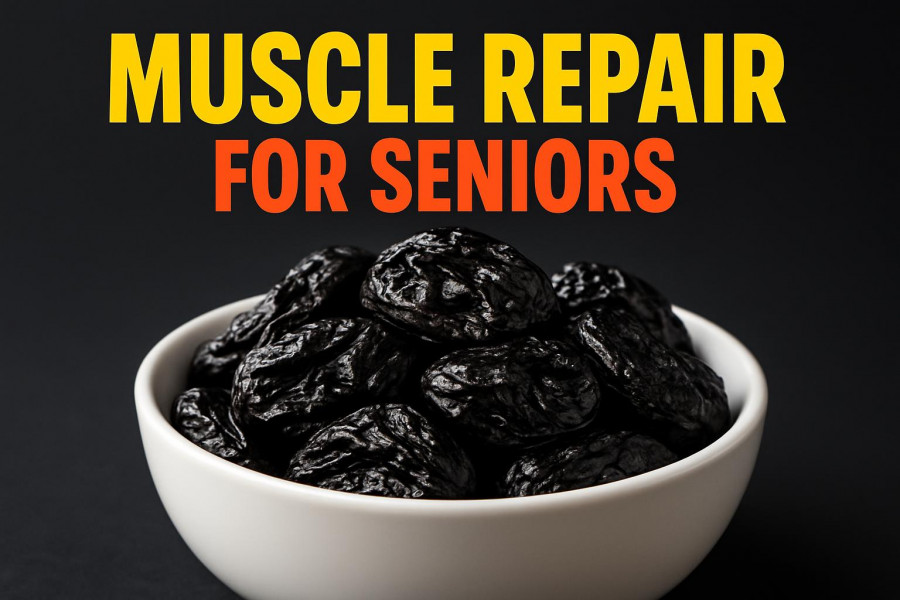
Unlock Your Potential: How Food Can Rebuild Muscle After 60
As we age, it’s easy to feel that our strength is slipping through our fingers. Many people assume that muscle loss is an unavoidable part of aging, but what if I told you that a simple food could not only help reverse this trend but also enhance your overall quality of life? Studies reveal that most seniors overlook one key element that could dramatically rebuild muscle even after the tender age of 75.
In 'Seniors, This One Food Rebuilds Muscle and Kills Sarcopenia', the discussion dives into the surprising power of food choices in combating muscle loss among seniors, prompting us to explore its implications and insights further in this article.
Understanding Muscle Loss: It’s Not Just About Aging
When we talk about muscle loss after 60, it isn’t just the natural aging process at play. Factors such as hormonal shifts, chronic inflammation, and something known as anabolic resistance contribute significantly to this decline. Anabolic resistance means our bodies become less responsive to the signals that promote muscle growth and maintenance. Fortunately, this condition is reversible.
Many seniors express challenges when standing up from a chair or keeping up their usual walking pace—these aren’t just signs of aging but indications of metabolic issues that can often be addressed with lifestyle changes, focusing specifically on nutrition.
The Game-Changing Food: Why Beef Protein Stands Out
So, what is this miracle food? Surprisingly, it's not the typical high-protein options one might think of, such as eggs or dairy. The standout food is lean beef, specifically beef protein isolate, which is richer in leucine than other proteins. Leucine is a powerful amino acid that acts as the key signal for muscle repair and growth.
Research has shown that older adults require about 2.5 to 3 grams of leucine per meal to initiate muscle protein synthesis. Incorporating a high-leucine meal, like lean beef, combined with light physical activity, can help prime your muscles to effectively use the nutrients you provide them.
Simple Strategies to Engage Your Muscles
The good news is that these changes can be easily implemented into your daily routine. Here are a few simple strategies:
- Meal Timing: Instead of snacking throughout the day, focusing on fewer but larger meals can significantly benefit muscle recovery.
- Increase Insulin Sensitivity: Simple activities like a daily walk after meals can help manage insulin levels, allowing your muscles to absorb nutrients more effectively.
- Incorporate Movement: Light resistance exercises, like chair squats or resistance band workouts, can help your muscles become more responsive.
Additional Nutritional Allies: Fruits That Rebuild Muscle
In addition to beef protein, certain fruits also carry incredible potential for combating muscle loss. For instance:
- Avocados: Rich in healthy fats and potassium, avocados help reduce inflammation and support muscle contraction.
- Tart Cherries: Known for their ability to reduce muscle soreness and promote restful sleep, making it easier for your body to recover.
- Pomegranates: Packed with antioxidants, these fruits improve circulation and fitness endurance.
- Prunes: These little gems not only aid digestion but promote muscle growth, all while reducing inflammation.
- Apples: With compounds like ursolic acid, apples not only help stimulate muscle growth but also enhance energy levels due to their antioxidant properties.
The Importance of Magnesium: An Overlooked Element
Lastly, let’s shed light on another crucial component in muscle repair—magnesium. Often unnoticed, magnesium plays a vital role in muscle recovery, aiding both energy production and reducing inflammation. For people over 60, this mineral is vital for maintaining muscle health and overall well-being. Simple methods to increase magnesium intake include including dark leafy greens, nuts, seeds, and even considering supplementation if necessary.
The bottom line is that rebuilding muscle after 60 doesn’t have to be a daunting task. By incorporating high-quality protein, particularly from beef, and leveraging the benefits of certain fruits and minerals like magnesium, you can take powerful steps toward restoring your strength.
If you’re ready to take charge of your muscle health and feel more energetic, consider implementing some of these dietary changes today. Your body will thank you for it!
 Add Row
Add Row  Add
Add 




Write A Comment